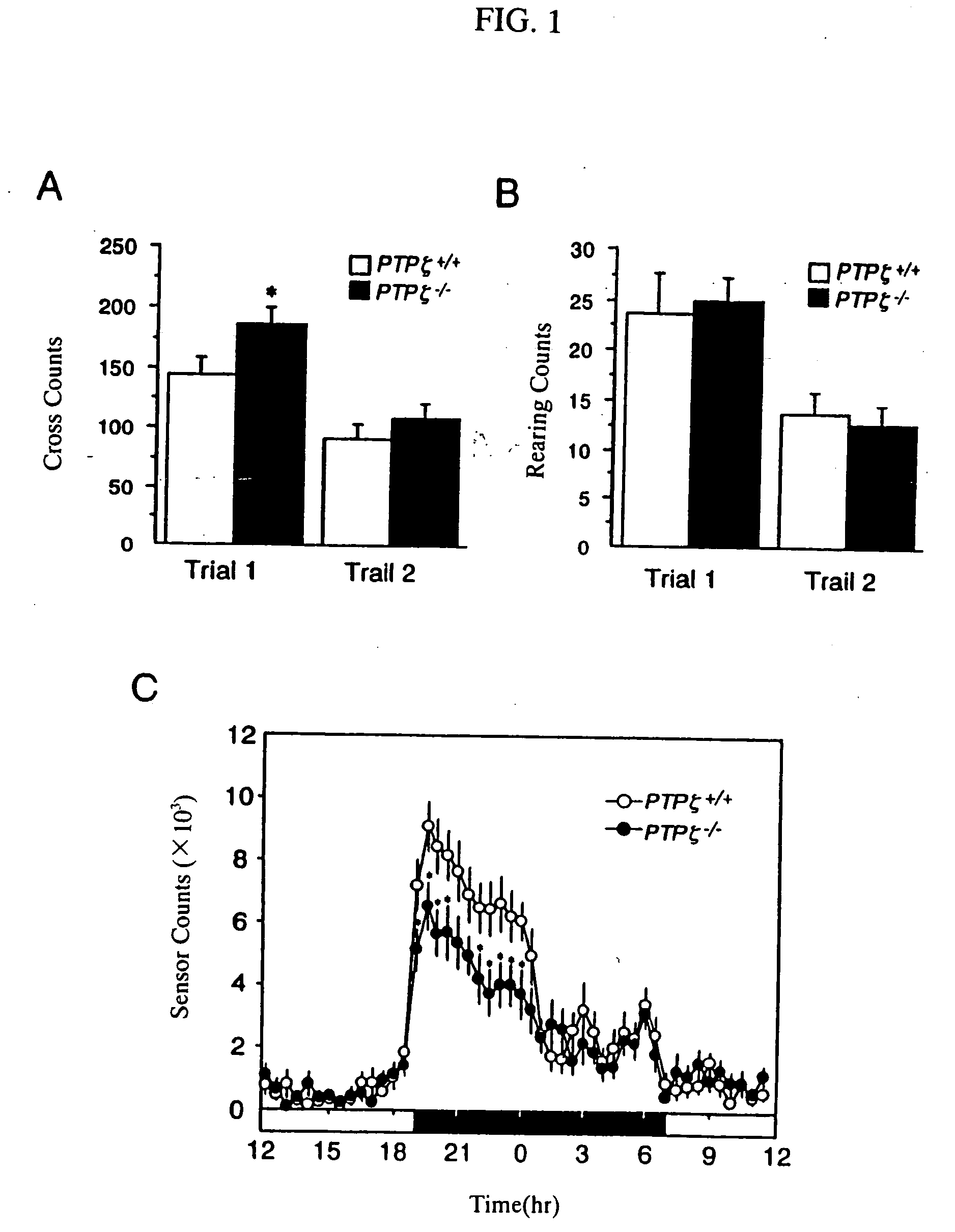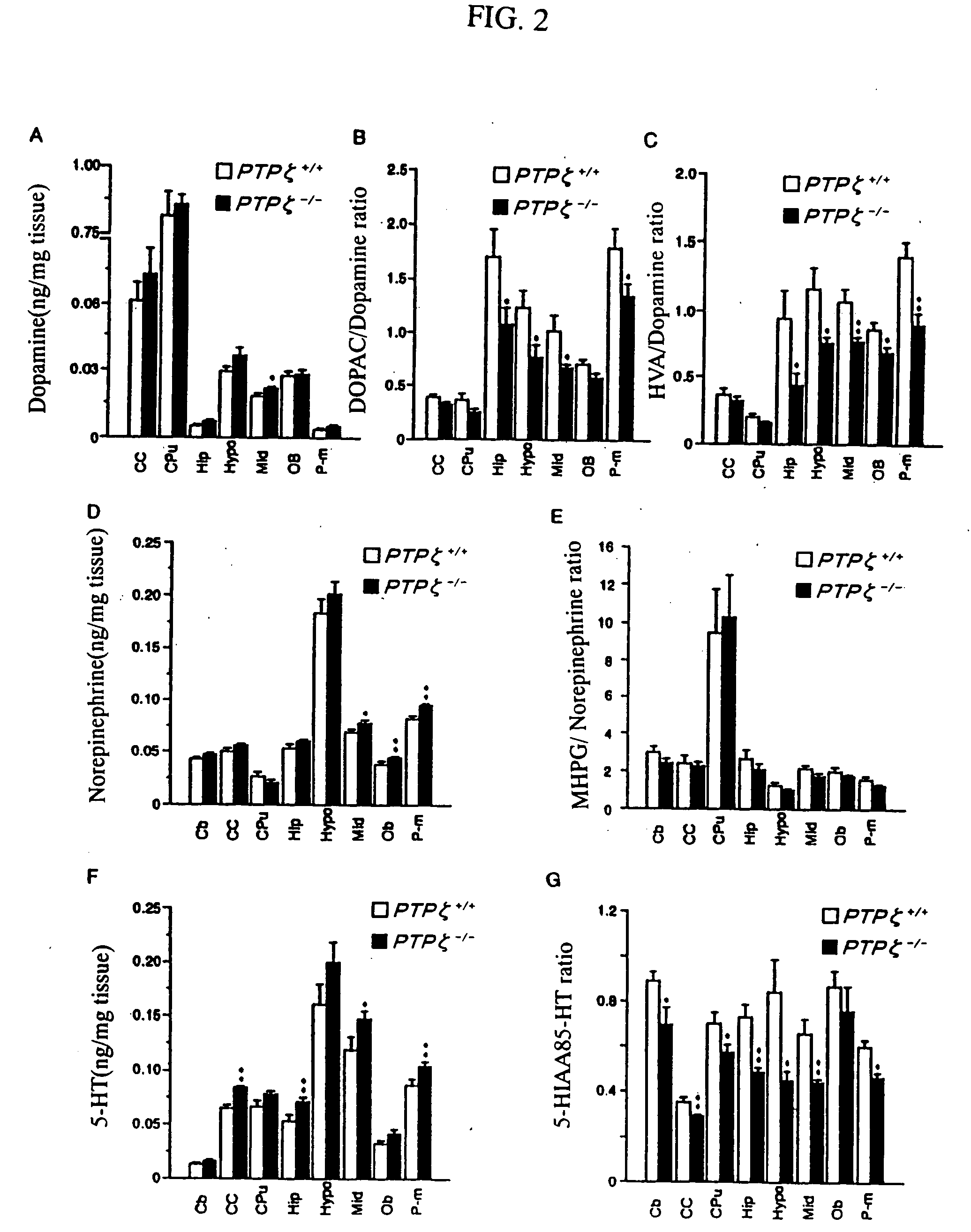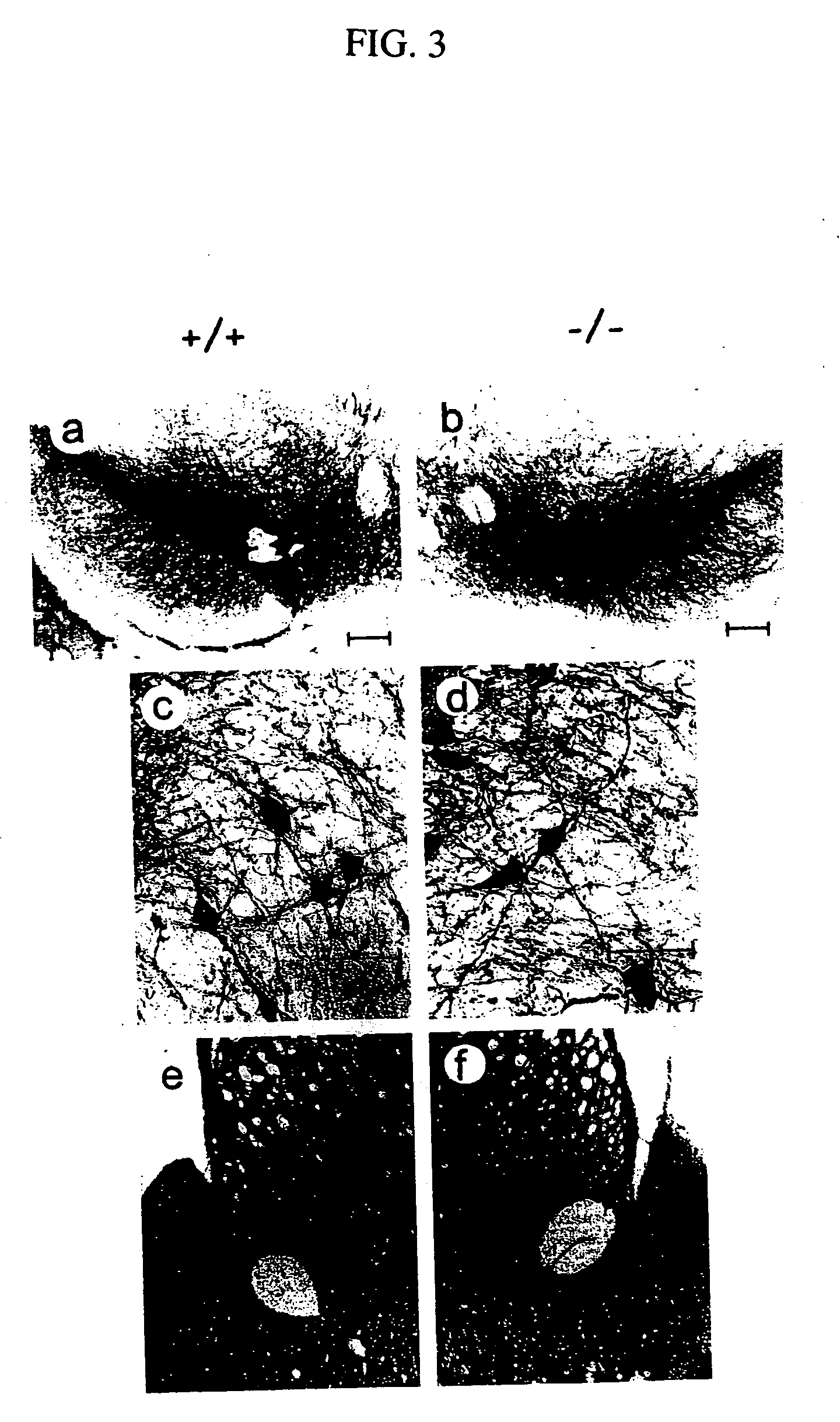Method for screening PTPzeta activity promoter or inhibitor
a promoter or inhibitor technology, applied in the direction of nervous disorders, drug compositions, instruments, etc., can solve the problem that the physiological role of ptp has been hardly elucidated so far
- Summary
- Abstract
- Description
- Claims
- Application Information
AI Technical Summary
Benefits of technology
Problems solved by technology
Method used
Image
Examples
example 1
Physiological Role of PTPζ In Central Dopamide Pathway and Monoanine Pathway, and Usefulness of a PTPζ-Deficient Mouse
[0031] Though large amount of PTPζ is expressed in the central nervous system, its neurophysiologic role has been unknown. Therefore, the importance of PTPζ molecule in higher cerebral function was examined at individual level by comparing and analyzing a PTPζ gene-deficient mouse and a wild-type mouse behaviorally and neuropharmacologically.
example 1-1
Method
(A-1 Animals)
[0032] A PTPζ-deficient mouse was generated by the method described in the aforementioned paper written by the present inventors (Neuroscience Letters 274, 135-138, 1998). A LacZ gene was inserted into the position immediately after the translation initiation codon in exon 1 of a PTPζ gene of a mutant mouse and accordingly, a LacZ gene was expressed under the control of expression regulatory unit of the PTPζ gene. In this experiment, a knockout mouse was backcrossed with inbred C57BL / 6J line for 4 generations, and male littermates of 2 to 5 months old were used. The animals were housed in an animal care facility at 25.degrees C., with a 12 / 12 hours light-dark cycle and fed food and water ad libitum. Animals were cared in accordance with the institutional guidelines.
(A-2 Behavioral Experiment)
[0033] A behavioral experiment was conducted during the light cycle from 7:00 a.m. to 7:00 p.m.
A-2-1
[0034] In an open field test, a mouse was placed in the center of ...
example 1-2
Results
(Behavioral Phenotype of PTPζ-Deficient Mice)
[0046] In order to elucidate the behavioral phenotype of PTPζ-deficient mice, behavioral observation was conducted by an open field test (the above-mentioned methods A-1 and A-2-1). Locomotor activity (A) and rearing (B) of wild-type mice (PTPζ+ / +, n=10) and PTPζ-deficient mice (PTPζ− / −, n=12) were measured for consecutive 2 days by the open field test, and the results are shown in FIGS. 1A and 1B, respectively. The data are presented as mean±SEM (*p<0.05). As a result, PTPζ-deficient mice exhibited larger amount of locomotor activity than wild-type mice, and significantly high motility in the open field on the first day. However, 24 hours later, the change disappeared in the test (FIG. 1A). On the other hand, significant change was not found in values for rearing, an exploration behavior (FIG. 1B). It was revealed that the PTPζ-deficient mice increased their responsibility of locomotor activity to novel circumstances.
[0047] Lo...
PUM
| Property | Measurement | Unit |
|---|---|---|
| height | aaaaa | aaaaa |
| internal diameter | aaaaa | aaaaa |
| depth | aaaaa | aaaaa |
Abstract
Description
Claims
Application Information
 Login to View More
Login to View More - R&D
- Intellectual Property
- Life Sciences
- Materials
- Tech Scout
- Unparalleled Data Quality
- Higher Quality Content
- 60% Fewer Hallucinations
Browse by: Latest US Patents, China's latest patents, Technical Efficacy Thesaurus, Application Domain, Technology Topic, Popular Technical Reports.
© 2025 PatSnap. All rights reserved.Legal|Privacy policy|Modern Slavery Act Transparency Statement|Sitemap|About US| Contact US: help@patsnap.com



